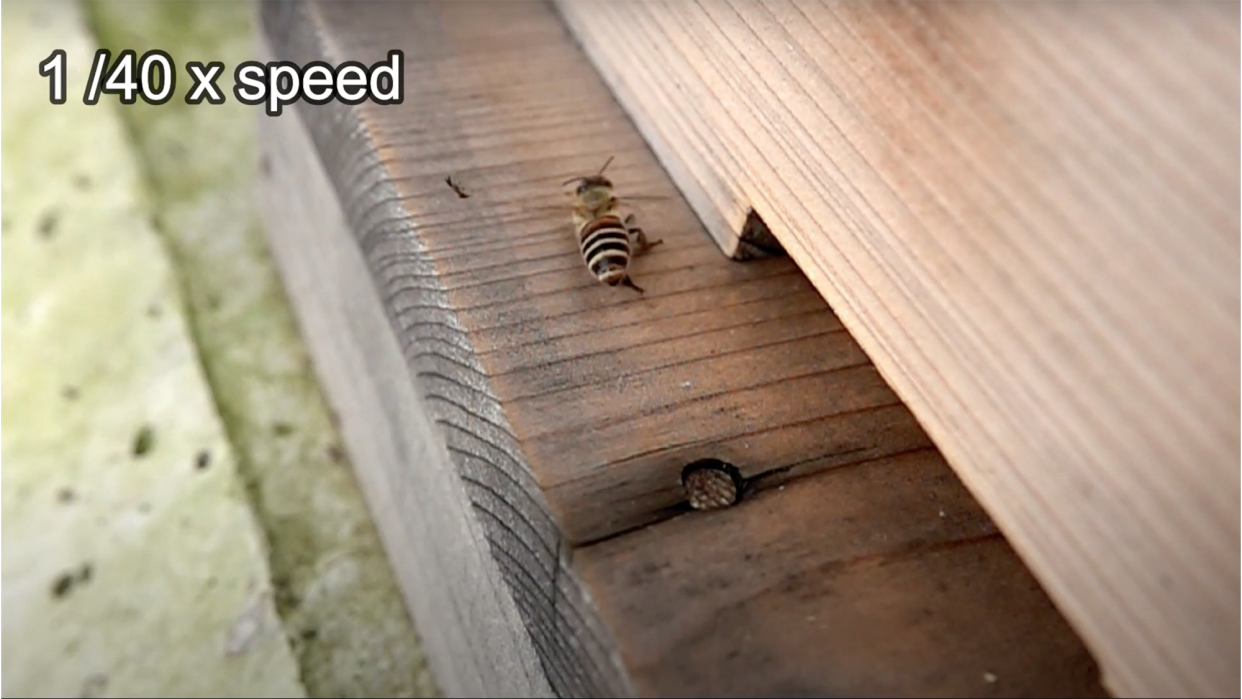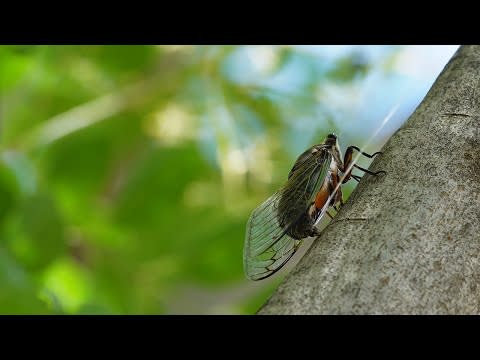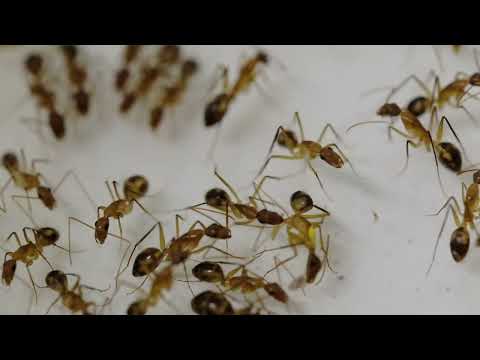Ant gets bee-slapped, and other strange bug moments

Some honey bees in parts of Asia have an effective way of keeping intruders out of their hives. They slap them–with lightning speed. Video included in a study published July 10 in the journal Ecology shows how they send ants tumbling away.
Ants are often attracted to beehives due to their large stores of larvae, pupae, and honey. Intrusion can cause devastating damage to honey bee colonies, as the ants will even eat bee’s protein-rich eggs. The authors from Japan’s National Institute for Environmental Studies believe that the hitting motion is a way for the bees to send thieves away without wasting a ton of energy.
Using this wing-slapping technique appears to require less effort than other moves like wing-fanning. Fanning is when a bee flutters its wings to blow an ant away without making contact with its body. As anyone who has had ants on a kitchen counter can tell you, this makes a difference when fending off that ong line of ant invaders.
[Related: What’s going on with spotted lanternflies?]
According to the authors, it is still unclear if other varieties of honey bees perform this wing-slapping behavior. However, this study and other research indicate that various honey bee species and subspecies use different defense behaviors depending on the risk of ant predators.
“This new wing-slapping behavior was found to be the main method used by Japanese honey bees to defend against intruding ants,” co-authors Yugo Seko, Kiyohito Morii, and Yoshiko Sakamoto wrote in a blog post accompanying the paper. “The results of this study provide important insights into the evolution of bee defensive behaviors in various regions around the world.”
Here are some other behaviors bugs have been caught doing on camera, from the bizarre to the down right innovative.
Cicadas peeing in jet streams
These noisy bugs known for their cyclical invasions and hypersexual activity can urinate in high speed jets more similar to large mammals. Insects that generally eat xylem sap from trees pee in droplets since it loses less energy, using their butts to help catapult it away. Cicadas eat so much sap that flicking away each droplet one-by-one would be too taxing.

“Peeing in jets allows cicadas to generate a large volume of liquid excretion,” bioengineer/biophysicist Elio Challita told Popular Science. “This is critical because these insects must ingest a substantial amount of xylem-sap daily. So they need to excrete large volumes as well.”
[Related: How bug ‘wranglers’ help document the lives of flies, dung beetles, and more.]
Putting the ‘ant’ in antibiotic and chopping legs
According to a December 2023 study, Matabele ants may be able to tell if a wound is infected and treat them with antibiotics produced in their saliva. Their spit is likely chock full of antimicrobial compounds and proteins. The antibiotics are taken from their metapleural gland, which is located on the side of their thorax. This secretion has 112 components and half of them are known to have antimicrobial or wound-healing effects.
“The hydrocarbon profile of the ant cuticle changes as a result of a wound infection,” study co-author and animal ecologist Erik Frank said in a statement. “With the exception of humans, I know of no other living creature that can carry out such sophisticated medical wound treatments.”
Carpenter ants don’t have the same glandular secretions. Instead, they appear to treat their nestmate’s wounds by either cleaning them out or removing the limb entirely. It’s possible that the insect tailor the course of treatment depending on the type of injury.

The experimental treatments appear to pay off. In femur injuries where the ants always amputated the limp, the study’s authors saw a 90 to 95 percent success rate.
Nothing to see here…
The tiny, colorful, jumping spider species Siler collingwoodi use a combination of camouflage and some award-worthy mimicry to deter hungry predators. When stressed, these arachnids found in China and Japan will imitate the way an ant walks to avoid being eaten.
A May 2023 study found that this combo works to evade spiders that eat other spiders, but doesn’t work as well on hungry praying mantises. For the S. collingwoodi’s, it’s advantageous to mimic an ant because they generally don’t taste great to other bugs and can be armed with spines on their body, venom, or chemical repellents. Some species of “exploding” ants like Colobopsis saundersi will also fight and bite back when attached.

“S. collingwoodi is not necessarily a perfect mimic, because its gait and trajectory showed high similarity with multiple ant species,” Peking University in China ecologist Hua Zeng said in a statement. “Being a general mimic rather than perfectly mimicking one ant species could benefit the spiders by allowing them to expand their range if the ant models occupy different habitats.”

